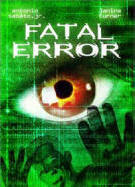NANO SPACE: The New Space Race is the Battle
For More and More Control Over Less and Less.
I have seen the future, and it is small. Steady advances in miniaturization are leading technologists beyond the scale where Newton's laws govern the world and into the realm I term the nano arena. Within the unimaginably tiny space of 100 by 100 nanometers - one millionth the area of the period at the end of this sentence - we're about to witness an amazing collision of physics, biology, and information technology. Developments in nano space will define this century just as electronics defined the last.
 IBM Almaden Research Center |
Consider IBM's quantum corral, an elliptical arrangement of iron atoms on a copper base 14 nm across. The corral, invented in 1993, could conceivably store information by holding atoms that signify 1s and 0s.
IBM's minuscule invention is only a little smaller than a more common information-bearing nanostructure: rhinovirus, the cause of the common cold. Rhinovirus' 20-sided shell of interlocking proteins protects an RNA strand of roughly 7,000 nucleotides. That is, this replicating nanomachine essentially carries 7 Kbytes of executable code.
The quantum corral stores data. Rhinovirus executes a program. Design a nanophotonic interface between them and, in principle, you've got a computer only 100 times bigger than a silicon atom!
Today, the corral is considered an engineered device, while rhinovirus is viewed as a biological entity. Within the nano arena, though, the distinction is meaningless. Both are nanomachines, one built on a substrate of metal, the other on a substrate of organic molecules. Bridging the gap will spark an explosion of playful development as nanoscale devices are snapped together as if they were Lego blocks. At first, technologists will replicate familiar devices like motors and switches, but soon they'll set out in entirely new directions. Nanocomputers will be cheap and plentiful, making it possible to embed the world with intelligence. Everything will have information-processing capability - every brick, bicycle, and body.
Scientists and engineers who come of age working in the nano arena won't cloister themselves in disciplinary guilds. They'll be equally adept with the tools of the bio lab, the chip fab, and the physics department. They'll be masters of bioinfonanotech.
Wired Magazine Issue 11.06 June 2003
Larry Smarr, a professor in UC San Diego's Department of Computer Science and Engineering, directs the California Institute of Telecommunications and Information Technology.



.jpg)










.jpg)




























